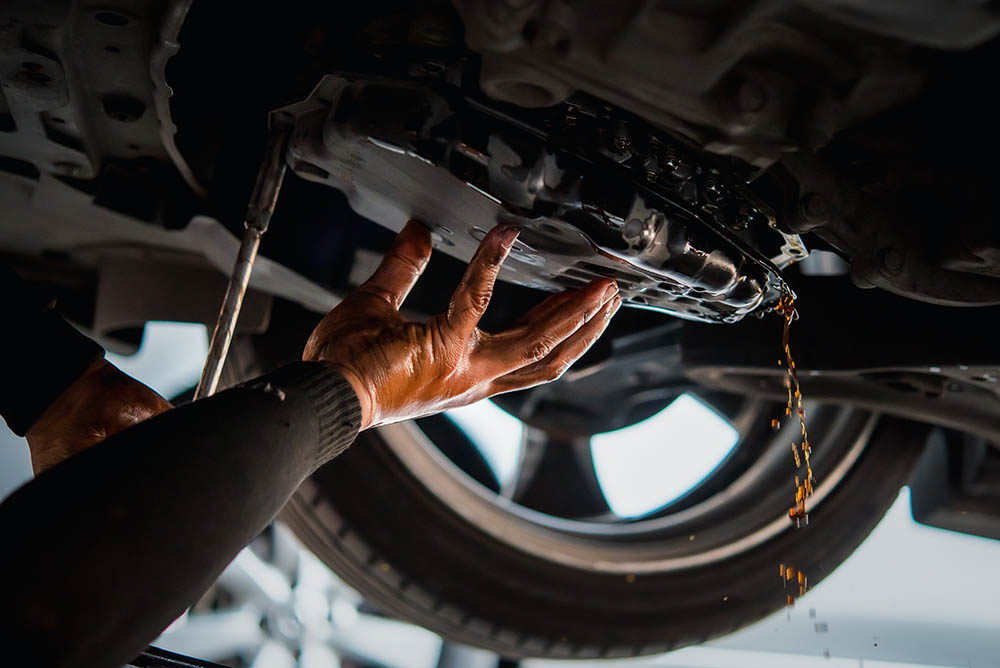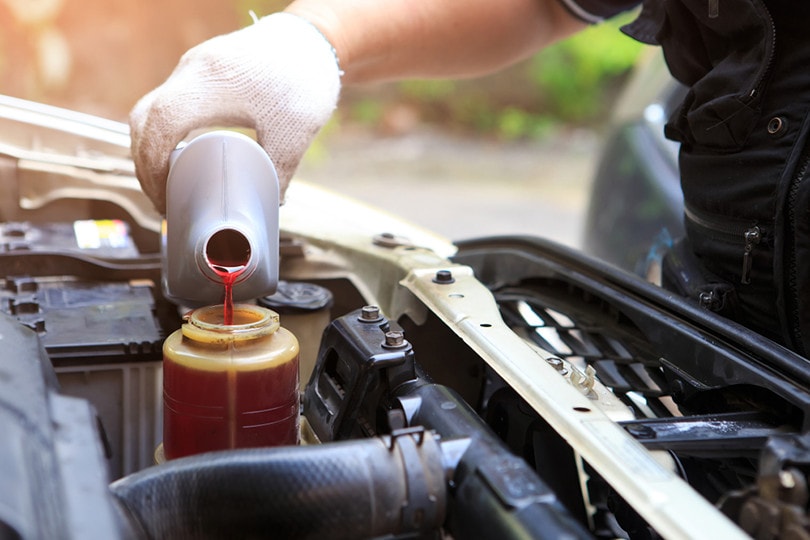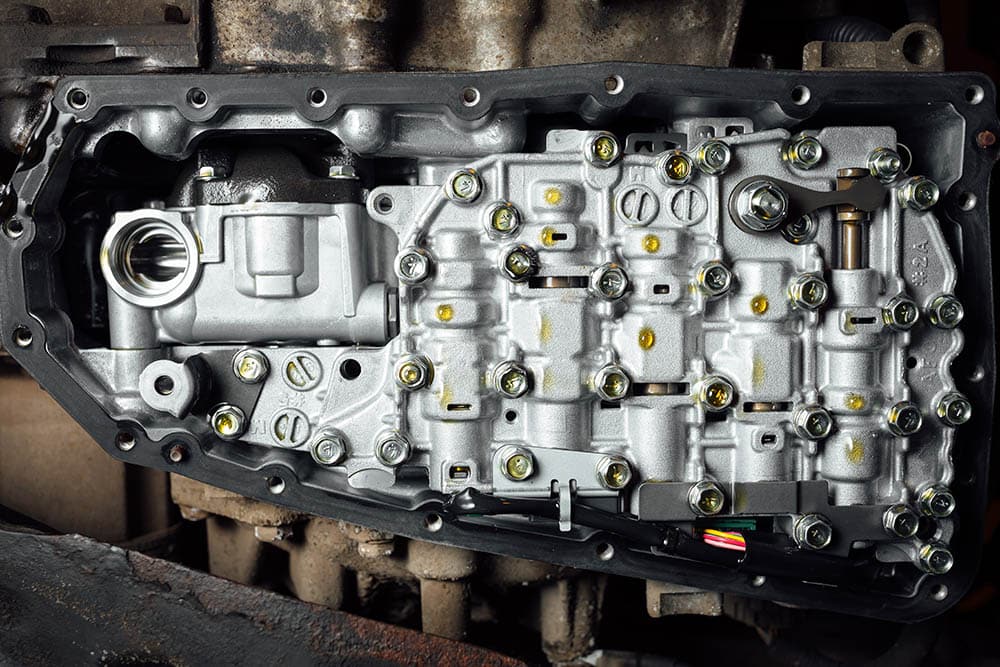Transmission Slipping: 8 Signs & Fixes
-
Shea Cummings
- Last updated:

You have probably heard horror stories of massive bills for transmission rebuilds or replacements. That’s why proper care and maintenance are so critical. Fortunately, you can fix many problems before they turn catastrophic.
Below, we have compiled a list of eight possible reasons your transmission might be slipping. Some of these issues are pretty straightforward DIY fixes, while others need to be addressed by a qualified mechanic ASAP.
The 8 Signs That Your Transmission Is Slipping
1. Burnt Fluid
A vehicle’s transmission is subject to extreme heat, especially in the case of towing large loads or navigating steep hills. If you notice a burning smell, one thing that you should check is your transmission fluid.
By pulling the dipstick, you should be able to tell whether the transmission fluid is the cause of the smell.
- Possible Solution: Flush and change transmission fluid ASAP.

2. Leaking Transmission
Unless your vehicle is older, you typically won’t have to worry too much about a transmission leak. However, a newer vehicle’s transmission can still leak.
As a vehicle ages, seals and gaskets begin to wear out, which is where most leaks come from. If you notice transmission fluid on the ground, you’ll want to get it repaired pronto because low transmission fluid leaves the transmission vulnerable to damage and slipping.
- Possible Solution: Check fluid level, and if it’s low, top it up. There is a special fluid you can put in the transmission that fixes minor leaks. If that doesn’t work, you’ll need to have the transmission repaired. If it’s fixed right away, it’s not too expensive and will prevent further damage.
3. Low Fluid
Even if there is no leak, fluid degrades over time and is used up. If you notice some slipping, the fluid may be low. And if not topped up, low fluid levels will eventually cause damage to the internal components of the transmission.
- Possible Solution: Check fluid level with dipstick and top up if necessary. Make sure you fill it with the same fluid or one designed to mix with other fluids.

4. Clutch Issues
If your vehicle has a manual transmission and it begins slipping, there is a small chance it’s got low fluid. However, more often than not, the clutch disc is wearing out. If you rule out a fluid leak, the only real fix is to have the clutch disc replaced.
It’s a little different in an automatic transmission. If you rule out a leak, it could be the clutch plates (automatic transmissions don’t have a clutch disc), and the only way forward is to replace the plates and change the fluid.
- Possible Solution: Change fluid and clutch disk or clutch plates.
5. Transmission Gears
Another component that can wear out in a transmission is the gears. Several things contribute to the gears wearing out but the main one is normal wear and tear. In a high mileage transmission, the gears are worn out, and slipping is fairly common.
However, using the incorrect fluid in the transmission or extreme heat can also contribute to the gears wearing out prematurely.
- Possible Solution: A mechanic will likely have to diagnose and fix this problem after you’ve ruled out low or burnt fluid.

6. Transmission Not Responding
There are several reasons that a transmission may not switch gears. The first thing to check is the fluid level. Low or incorrect fluid can cause the transmission to slip and, in some cases, not engage.
If the fluid looks fine, it will take more advanced knowledge to diagnose and fix the transmission properly.
- Possible Solution: If you’ve confirmed fluid level and type are correct, the only thing you can do is have the vehicle towed to a qualified mechanic for diagnosis and a fix.
7. Solenoid Issues
Several solenoids within your transmission are responsible for valves that control the flow of fluid and pressure. If these solenoids malfunction, it can cause the transmission to slip or not engage properly.
- Possible Solution: If you’re able to hook your vehicle up to an OBD scanner, there will often be codes to indicate if a solenoid is the issue and even which solenoid it is.

8. Worn-Out Transmission Bands
If you have an automatic transmission, there are metal bands in it that connect the gears. If the transmission is running hot, it’s not uncommon for these bands to wear out or break. Once this happens, the gears it’s connecting won’t engage properly, and you’ll get the slippage.
- Possible Solution: If you’re able to check this yourself, sometimes a band just needs to be adjusted if it’s worn. However, if it’s broken, you’re better off taking it to a mechanic if you’ve never changed the bands before.
How-To Prevent the Transmission from Slipping
The thing about all these potential causes for a transmission slipping is that they are almost all preventable. As long as you’re taking care to perform preventative maintenance, it’s likely you won’t have these problems.
As a rule, you want to change the transmission fluid and filter between 30,000 and 50,000 miles or every other year—whichever comes first. In between changes, make sure you check the fluid level and quality regularly. If you keep it clean and topped up, the fluid does its job in caring for the transmission.
What to Check First
The first thing to check in almost every scenario is the fluid level. Most transmission problems will stem from low fluid, and if you top it up in time, that quite often prevents further issues or damage.
Conclusion
When the transmission starts to slip and can be scary because of the potential for a big repair bill. However, it’s often as simple as changing or topping up the transmission fluid. If that’s not the case, the sooner you take it to a mechanic, the more likely you are to avoid a hefty bill.
Featured Image Credit: Gorlov-KV, Shutterstock
Contents
